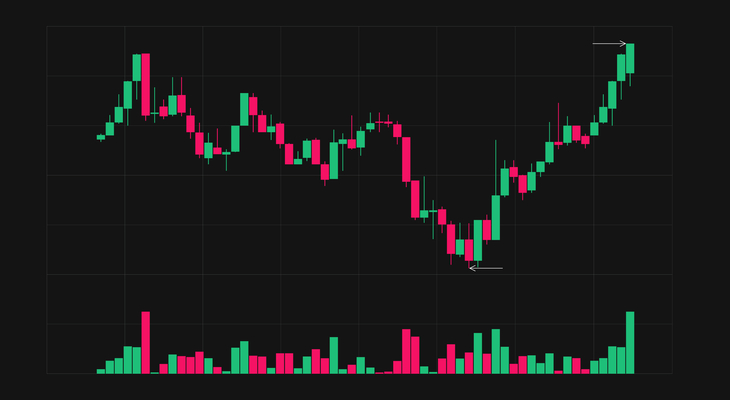Trading stock indices can seem intimidating and risky to many investors. However, with the right strategies and tools, stock index trading can be a great way to diversify a portfolio and potentially generate returns.
This ultimate guide to stock index trading will provide tips, strategies, and information on the various types of indices available, as well as the benefits of trading with FXTM.
We will explore the fundamentals, sentiment, and technical aspects of stock index trading, and discuss the risk management rules and disciplined approach necessary for success.
With this guide, investors can learn how to make the most of their stock index trading experience.
Key Takeaways
- Stock indices are a popular choice for traders who prefer to trade on market price action rather than individual assets.
- FXTM offers a wide variety of popular stock indices, including major US and EU stock CFDs.
- Traders can choose from different types of indices, such as commodity, stock, bond, and synthetic indices.
- FXTM provides opportunities for stock indices trading with advantages like a wide range of stock portfolios and the ability to speculate on price movements without owning the underlying assets through CFDs.
Types of Indices
Stock indices consist of a basket of stocks from top companies on a particular stock exchange and are the most popular type of index among traders.
There are different types of indices, such as commodity, stock, bond, and synthetic indices.
Commodity indices are made up of baskets of commodities, while bond indices contain various bonds.
Synthetic indices are based on simulated markets and behave like real financial markets.
The advantages of trading indices include access to a wide range of stock portfolios and the ability to speculate on price movements without owning the underlying assets.
Mini indices offer a smaller lot size and require less capital to invest.
Indices can be calculated using price-weighted or capitalization-weighted schemes.
Trading indices provides the opportunity to benefit from market trends without having to purchase individual stocks.
Trading Strategies
Achieving success in stock indices trading requires a disciplined approach and an understanding of key strategies. Common strategies include fundamental and technical analysis, as well as risk management techniques.
Fundamental analysis involves studying the economic factors that impact the index, such as political and economic news.
Technical analysis involves the use of charting tools and indicators to identify patterns in the price movement of the index.
Risk management techniques include setting entry and exit points, setting stop-loss orders, and using leverage.
Additionally, traders should avoid common trading mistakes, such as letting emotions influence trading decisions, overtrading, and not following a trading plan.
By following these strategies, traders can minimize their risk and maximize their gains.
FXTM Benefits
FXTM provides unique benefits for stock indices trading, such as access to a wide range of stock portfolios and high-quality technical analysis tools. Traders can take advantage of FXTM’s multiple account types, such as Advantage and Advantage Plus, which have different minimum deposits and commissions. FXTM also offers spreads for index trading that vary and may increase during specific periods. Additionally, CFDs trading allows for potential profits with small investments and leverage.
| Benefits | Description | |
|---|---|---|
| Account Types | Advantage and Advantage Plus with different minimum deposits and commissions | |
| Spreads | Vary and may increase during specific periods | |
| CFDs | Potential profits with small investments and leverage |
|Leverage|Leverage allows traders to increase their profits by using a smaller amount of capital to control larger positions.|
Frequently Asked Questions
What companies are included in popular stock indices?
Popular stock indices, such as the DAX, Euro 50, SP 500, and FTSE 100, are composed of a selection of stocks from top companies. When choosing indices, traders should consider the tax implications of trading in the country of residence.
Furthermore, traders should research the underlying stocks to gain insight into the performance of the index. Analyzing a stock market index involves fundamental, sentimental, and technical analysis.
It is also important to consider economic events and company announcements that can impact the value of an index. Ultimately, successful traders aim to make more money than they lose on profitable trades.
What economic events and company announcements can impact the value of an index?
Economic events and company announcements can have a significant impact on the value of a stock index.
Macroeconomic news such as inflation, employment, and GDP figures can affect the performance of a market.
Fundamental analysis, which looks at the financial health of individual companies, can also impact the value of a stock index.
Company announcements such as earnings reports, dividends, and mergers and acquisitions can affect the value of a stock index.
Therefore, analyzing economic events and company announcements is essential for traders who wish to speculate on the price movements of stock indices.
How can I minimize my losses while trading indices?
Captivating audiences, one can minimize losses while trading indices by adopting a risk management strategy and portfolio diversification.
By managing risk, traders can limit losses to a predetermined size. This is done by setting a stop loss order or limiting leverage.
Portfolio diversification is also a way to reduce losses by spreading risk across various assets. This allows traders to benefit from movements in different markets and can help reduce overall risk.
Additionally, having a disciplined approach and understanding the market are important for successful trading.
How do I analyze a stock market index?
Analyzing a stock market index requires an understanding of technical indicators, volume trends, and fundamental analysis.
Technical indicators are a form of analysis used to identify price movements and generate trading signals.
Volume trends involve tracking the number of shares traded over a certain period of time.
Fundamental analysis examines the economic, financial, and other qualitative factors in the market to determine the intrinsic value of a security.
Trading strategies should be based on a combination of these tools to make informed decisions.
What tools and resources does FXTM provide for trading stock indices?
FXTM provides a variety of tools and resources for trading stock indices. These include:
- MetaTrader 4 and MetaTrader 5 trading platforms
- Technical analysis tools
- Indicators
- An economic calendar
These resources allow traders to analyze stock market indices and gain insight into market volatility.
Additionally, FXTM enables margin trading, which allows traders to open positions with small investments and leverage. They also offer:
- Demo trading accounts
- An advanced strategy tester for developing trading systems
Finally, FXTM provides educational resources and additional forex trading indicators for traders.
Conclusion
Stock index trading is a popular way to speculate on the markets with small investments and leverage. To be successful, traders must develop risk management rules, maintain a disciplined approach, and analyze the fundamentals, sentiment, and technical aspects.
FXTM provides the ideal platform to do this, with MT4 and MT5, technical analysis tools, an economic calendar, and educational resources. By using these resources, traders can maximize their profits and minimize their losses, making stock index trading a rewarding and successful endeavour.











